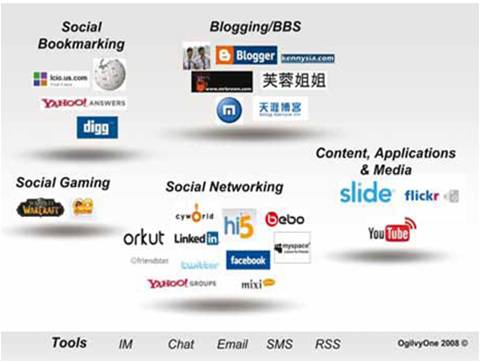- Category: January - February 2010
 It was interesting for me to read that according to IDC, traditional corporate culture remains the largest barrier to successful social media initiatives, simply because social media challenges the hierarchical management model of many organizations. Well, everybody can imagine the challenges organizations have to embrace, if they intend to deploy and manage social media initiatives effectively.
It was interesting for me to read that according to IDC, traditional corporate culture remains the largest barrier to successful social media initiatives, simply because social media challenges the hierarchical management model of many organizations. Well, everybody can imagine the challenges organizations have to embrace, if they intend to deploy and manage social media initiatives effectively.
We all know by now that the Internet is an amazing instrument of expression for consumer power. About 80 percent of all individuals that intend to travel for instance get informed on Internet assessment portals before making a reservation - where they get more and more often influenced by rankings and comments placed there.
Fact is that information on where you get something for the cheapest price, what you absolutely must have, or what you should keep your fingers off, spreads on the net like a wildfire. Who has something to say, simply posts it on to the net. The community likes to listen and if it suits, passes on the information immediately. That describes social media perfectly, which simply stands for collaboration or sharing of information between two people or more online. It’s an Internet-based tool that allows for groups to engage in peer-to-peer conversations and exchange content - including video, audio, text and multimedia, which is then published and shared within a social environment.
The emergence of social media has generated a new and innovative way to create dialogue and receive useful feedback in a way never thought possible before. Just think about platforms like Facebook, Twitter, YouTube, Blogs, or Flickr and their impact in recent times.

Social Media - and I mean here the whole bundle as described by Ogilvy (Graphic 1) - which means the combination of channels, platforms, communities, content and tools that power the phenomenon of peer to peer communication or “word of mouth”:
- Social Networking Platforms
- Social Bookmarking Platforms
- Content, Applications & Media
- Blogging Platforms
- Social Gaming
The mentioned areas are definitely the hottest trends around right now.
But how useful are social networks really and how can they benefit businesses?
To answer this question, we should determine first what exactly the biggest draws of social networks are. Straightforward I would say the additional and greater targeted exposure and increased traffic - for example, through links to your website, which in turn help to improve your company’s search engine ranking, which once again spurs more traffic to your site and in that way increases conversions and sales. Done right it can further create positive brand association and growing brand awareness, extend your business ventures and bring you more loyal customers.
Another fact you should keep in mind is that mass advertising is increasingly annoying and steadily becoming more ineffective. Who has a purchasing intention nowadays, believes more in what friends recommend as pure subjective experience of an unknown third party enjoys today more confidence than the expensive, glossy brochures in the market.
Another point to mention is that companies better behave properly and treat their customers well, because in the Web 2.0 world, everything will be brought to light. Who messes something up will be mercilessly criticized online by disappointed consumers. Who, however, provides positive talk and encourages customers to be active participators is fit for the new marketing world.
Social media experts are still in the making simply due to the fact that no one has been dealing with the tool long enough to be called an expert. So take your chance to get conversant with social media and become part of the outstanding group of those companies that embrace the risk to start a social media campaign. Jump on the bandwagon!
By Daniela La Marca



